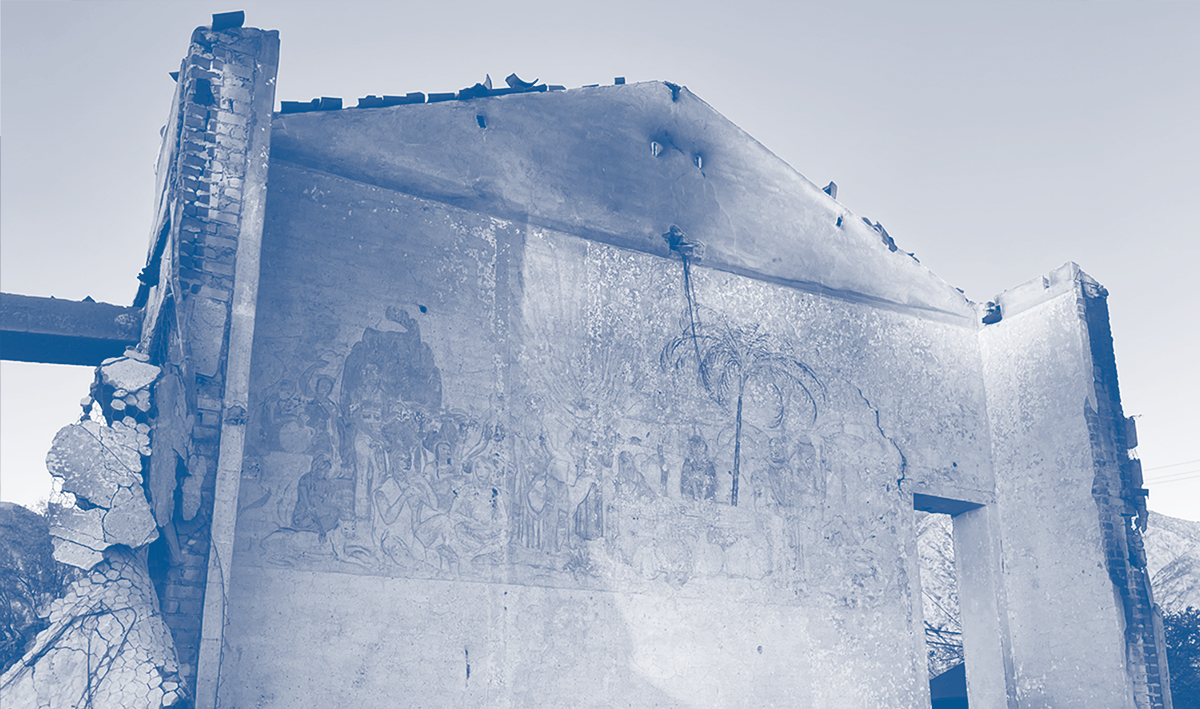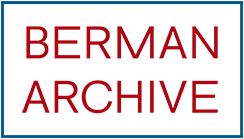Hello and welcome to the January 2025 edition of the Documensch Newsletter, a (once again) regular publication of the Berman Archive at Stanford.
We aim to engage with the past, present, and possible of the American Jewish community. We took a few months off to retool our efforts, but rest assured, we’re committed to bringing you these regular updates. There’s a tremendous need for analysis, documentation, and conversation about American Jewish communities, and we hope you’ll stick with us as we wade into the discourse with you.
January was a doozy for Jews and everyone. We take a look at the Los Angeles fires and how they have impacted Jewish life and history there. We also explore our archive’s holdings that highlight Jewish concerns about fascism in America as we seem to be entering a new era in which the currents of political power have strong echoes of those earlier times.
As always, reach out with feedback, suggestions of articles we should consider sharing, or ideas for documents we should consider archiving. We can be reached at bermanarchive@stanford.edu.
Thanks for reading,
-Ari
Ari Y Kelman, Director, Berman Archive
Jewish Los Angeles Burns

Los Angeles has the second largest Jewish population in the world outside of Israel (lead only by NYC). It is an unequivocally Jewish city, with over 600,000 Jews living in the greater LA area. Historic fires ravaged LA earlier this month, burning over 16,000 structures, most of which were single family homes. It was a tragedy for the city and this global Jewish center. We at the Berman Archive have also been touched by the devastation: our core team either lives in LA or was born here, we have many connections throughout the city, and we are sending our love to friends and colleagues who have lost their homes or who have been displaced.
The destruction was widespread. Jewish composer and emigre Arnold Shoenberg’s grandson shared his view of the loss from the Pacific Palisades where homes and relics from “the era when the city served as a refuge for a remarkable group of talented refugees, Jewish and non-Jewish, saved from certain death in Hitler’s Europe.” All over the city, Judaica go-bags were packed, containing artifacts, menorahs and other objects from holocaust survivors. LA’s Jewish community was both affected and activated, from quick loans to free bagels to celebrity homes evacuated and burned.
In Altadena, the Eaton Fire destroyed a synagogue—the Pasadena Jewish Temple & Center, which served the Pasadena area for more than 100 years. The congregation was at this location since 1941. Most was lost but the torahs were heroically saved and on the one remaining wall, a hidden mural was discovered, likely a biblical scene meant to evoke the Jews liberation from Egypt. Rabbi Grater told the LA Times, “We’re a people of history. We know in Jerusalem and the land of Israel that you find murals on top of murals and stones on top of stones. The fact that this was a hidden mural … is a very Jewish idea.”
To get a little more perspective, we spoke with Dr. Caroline Luce, an historian of Jewish LA. Luce is currently writing a book on LA history focusing on Jews and the Labor Movement in the early 20th Century, and serves as Project Director for the UCLA Institute for Research on Labor and Employment. “There is a very Jewish tradition of memory work,” says Luce. She points to the efforts across congregations and communities that have created archives and spaces dedicated to Jewish cultural heritage.
Luce has been hands on with Jewish historical preservation over the past years. She was integral to the processing of the papers of the Western States Jewish History Association. Later she served as the chief Digital Curator of the UCLA Mapping Jewish LA exhibit. “I write about the preservation of the Breed Street Shul,” said Luce. “And, I’m inspired by Rachel Gross’s work [in Beyond the Synagogue] that reminds us to think about preservation as a ritual. It is about drawing your connection between the past and the future and connecting you to a beloved community.” Connecting historical efforts at preservation and the current dislocation and destruction of Jewish spaces across LA, Luce continues, “I don’t know how you rebuild these kinds of sacred spaces when you tear them out from under a community. It seems to be much more complicated to me than just rebuilding the building because the displacement goes to all these nodes of the community.”
In so many ways, LA’s robust Jewish community has been most equipped to deal with the loss, able to tap a wide institutional and cultural well of support. But nothing can replace the silver candlestick brought over from Germany, or the synagogue grounds where children played and parents prayed. That being said, so much of LA’s core Jewish life and history stands strong, deep in the city’s core (surrounded by concrete, miles from any fire line).
Where should someone go to experience LA’s Jewish history? According to Luce, the go-to place for a tour used to be Boyle Heights, where Jews numbered over 35,000 in the 1930s. Boyle Heights, now a heavily Latino and working class neighborhood, has experienced the ravages of gentrification and there’s hesitancy to promote historical tourism there. Rather, Luce suggests, “Go to Pico-Robertson,” in the middle of the city. “It is just as old and has just as much historic bona fides as Boyle Heights. If you want to see Jewish life in LA, past and present, it’s all happening on Pico Boulevard.”
Luce’s book, Yiddish in the Land of Sunshine: Jewish Radicalism, Labor, and Culture in Los Angeles is slated for publication in 2026 from NYU Press.
Fascism Worries, Then and Now
American Jews were quickly pulled into the divisive fracas of Trump’s second term as president this month when Elon Musk, one of Trump’s most ardent supporters, delivered a Nazi salute during his speech at the inauguration. While many Jewish organizations condemned the gesture, the Anti Defamation League made efforts to minimize the moment. We can’t believe we’re wistful for Trump’s “American Carnage” phase at his first inauguration, but here we are.
And here we’ve been.
American Jews have been tracking, analyzing and theorizing the threat of fascism here in America for nearly 100 years. Case in point, the Berman Archive holds many examples of Jewish communal leaders writing about fascism, across many decades. Nathaniel Goodrich wrote in the 1940 Contemporary Jewish Record:
“When fascism comes to America, it won’t be called fascism. It will be called anti-fascism.” Thus bluntly spoke the late Senator Huey P. Long. The truth of his words, which seem to have served as a guide for many of America’s little men on horseback, lies in their implication that fascism in America will triumph—if it ever does—only under the cover of confusion. It is imperative, therefore, that Americans be fully aware of subversive and subtle tactics that are being used to set them against each other. The realization that democracy as an institution of government and a way of life is under attack on a world wide front has already awakened a demand for adequate defense measures.
An America united “under the cover of confusion” could be a remark written this week. Which isn’t comforting. In 1980, writing in the American Jewish Yearbook, David Dalin wrote about the tension between the need for free expression and civil liberties, and the need to stanch the rise of Nazi movements in America. A major flashpoint was the 1977 National Socialist march through the heavily Jewish town of Skokie, Illinois:
There were Jews in Skokie who had the gnawing feeling that history was repeating itself, that Nazism was once again on the rise. “There are the echoes of history rumbling through your mind and ticking off similarities and parallels that are all too uncomfortable,” said one Skokie resident. “Absurd analogies you say? Hitler started off small, bluffed and got what he wanted by promoting ideas contrary to what the vast majority of people and countries believed. He radicalized antisemitism.
Facing uncertainty, we would do well to listen to these voices from the not-so-distant American Jewish past. They have a lot to teach us about what lies ahead and how to face it.
